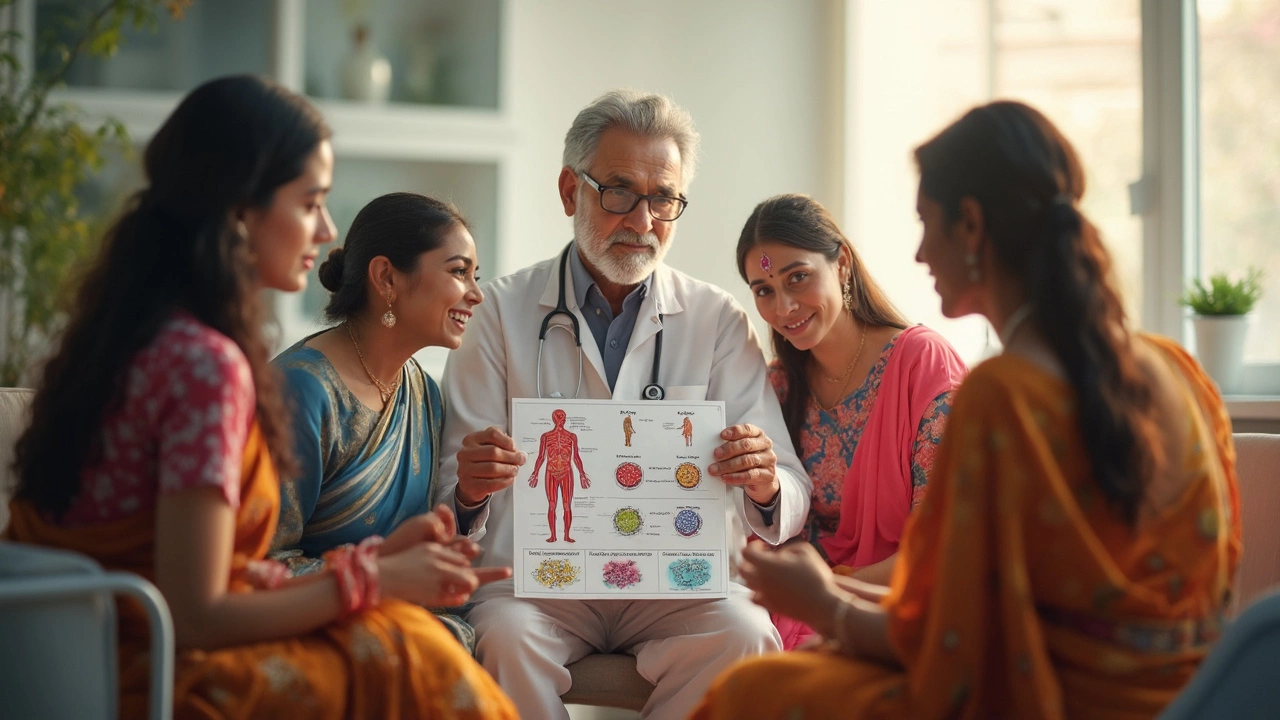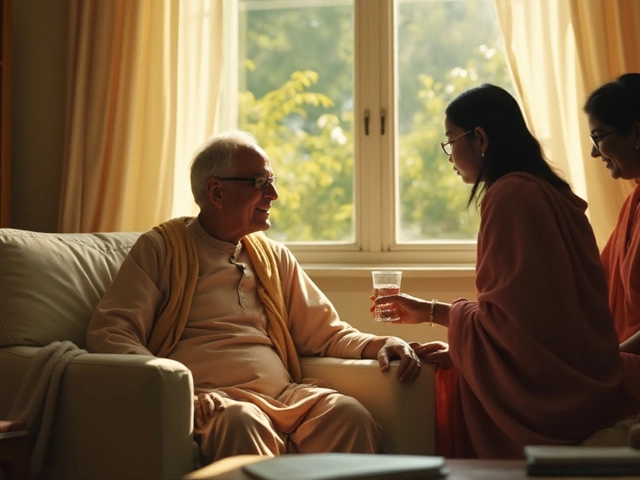The word 'cure' gets thrown around a lot, especially when talking about cancer, and that can create a lot of confusion—and sometimes even false hope. If you’re searching online hoping to find a cancer that’s always curable, you’re not alone. I had the same question when a close friend was diagnosed, and after endless hours of research and doctor visits, here’s what I learned: the answer’s not simple.
Doctors are super careful with the term '100% curable.' Cancer is tricky—what looks 100% curable on paper often depends on catching it early, getting the right treatment, and—no joke—a dash of luck. So, if you see promises online about a guaranteed cure for all, take a breath and read the details first.
But it’s not all bad news. There actually are a few types of cancer where cure rates can be nearly perfect, especially if they’re found early and treated right away. This isn’t just dusty textbook talk—real people are living proof. And I mean, these folks go on to live totally normal lives, raise families, and do everything they were doing before cancer crashed their plans.
- Is There Really a 100% Curable Cancer?
- Cancers with Very High Cure Rates
- Why Early Detection Matters
- The Treatments That Change the Odds
- Stories of Full Recovery
- What You Can Do: Tips and Next Steps
Is There Really a 100% Curable Cancer?
This is the big question everyone asks after a cancer diagnosis: is there such a thing as a curable cancer? The honest answer? In medicine, very few things are truly 100%. But here’s the bright spot—there are types of cancer with cure rates so high that your doctor might honestly call them “curable” if they’re found early enough.
The reality is, cure rates depend on three key things:
- How early the cancer is found (early-stage means better odds)
- The type of cancer (some are just easier to treat or slower-growing)
- How your body reacts to treatment (every person’s different)
Testicular cancer, for example—especially the type called seminoma—often gets cured with surgery and a little chemo. Most people go back to their regular life after. According to the American Cancer Society, the 5-year survival rate for early-stage testicular cancer is over 95%—some sources put it closer to 99% depending on the exact type and when it’s caught.
Then there’s thyroid cancer (specifically the papillary kind). When caught early, it’s got a survival rate in the 98-100% zone. Basal cell carcinoma, a super common skin cancer, is almost always cured if treated before it spreads. You go in, have it removed, and usually you’re set.
| Cancer Type | 5-Year Survival Rate (Early Stage) |
|---|---|
| Testicular (seminoma) | 95-99% |
| Papillary thyroid | 98-100% |
| Basal cell carcinoma | ~100% |
But here’s something important: doctors don’t always use the word “cure.” They’ll often say “remission” or “disease-free.” That’s because they want to stay realistic—there’s always a tiny chance something could come back, or show up somewhere else.
Cancer treatment has come a long way in just the last ten years. Still, no doctor promises a permanent magic bullet for every person. What you can count on? Early detection, the right treatment, and follow-up care put the odds heavily in your favor for certain types of cancer.
Cancers with Very High Cure Rates
You might be surprised by how far treatment has come, and how some forms of curable cancer now have survival stats that almost sound too good to be true. But it’s real—especially if these cancers are spotted early. Here’s a closer look at the top ones folks should know about.
- Testicular Cancer: This is the poster child for high cure rates. If it’s found when it’s just on the testicle and hasn’t spread, doctors talk about a cure rate over 95%. Even for advanced cases, treatments usually work well, and a ton of young guys go on to live full lives.
- Hodgkin Lymphoma: Back in the day, this was a scary diagnosis. Now, with today’s chemo and targeted radiation, over 90% of people diagnosed early survive five years or longer—and in plain speak, that often means cured.
- Early-Stage Thyroid Cancer: Especially the papillary type, which is the most common. Caught in the first stage, the five-year relative survival rate is around 99%. A lot of folks never see their cancer come back at all.
- Early-Stage Skin Cancer (Melanoma): If a melanoma is found before it spreads deep into the skin or to other parts of the body, the outlook is usually really good. Most people get a simple surgery and never have to worry about it again.
- Basal and Squamous Cell Skin Cancers: Even more common than melanoma, these types are almost always curable with quick outpatient treatment. They barely ever spread and are handled routinely in the doctor’s office.
Here’s a quick comparison, just to put things in perspective:
| Cancer Type | Early-Stage 5-Year Survival Rate |
|---|---|
| Testicular | 98%-99% |
| Hodgkin Lymphoma | 92%-95% |
| Papillary Thyroid | 99% |
| Melanoma | 99% |
| Basal/Squamous Cell | Over 99% |
Notice something? The word 'early-stage' keeps popping up. Catching these cancer types early makes all the difference. Treatments for these are standard and straightforward, making a true cure more than just a wish—it’s the normal outcome.
Here’s a tip—if you’re ever worried about a weird lump, bump, or skin change, get it checked out. Early action is the single thing that separates these cancers from being a quick fix or a much bigger fight.
Why Early Detection Matters
If you’re thinking about curable cancer, nothing tips the odds in your favor quite like catching it early. Early detection can turn a scary diagnosis into a survival story—seriously, that’s not just doctor talk. When doctors spot cancer before it spreads, treatments have a much higher chance of wiping it out for good. Sometimes, a small surgery does the trick, and you can move on with life.
Take testicular cancer or certain types of skin cancer (like basal cell carcinoma). If you find them super early, the cure rate sits right near 100%. When things get missed or ignored, though, survival rates drop—sometimes fast.
Check out this real-world rundown:
| Cancer Type | Survival Rate (Early Stage) | Survival Rate (Late Stage) |
|---|---|---|
| Testicular Cancer | Over 95% | Around 73% |
| Melanoma (Skin) | 99% | 27% |
| Breast Cancer | 99% | 31% |
Those numbers tell the story: the sooner you know, the better your chances. That’s why regular screening and not ignoring weird signs saves lives. And no, you don’t have to do anything wild—catching a cancer type early usually means keeping up with check-ups, following screening guidelines, and actually mentioning stuff to your doctor (even if it feels awkward).
- If you have a family history, ask about starting screenings younger.
- Don’t brush off weird lumps, sudden weight loss, or unexplained aches.
- If you’re over 50, screening for things like colon cancer isn’t optional.
I get it—these tests sound uncomfortable or boring, but compared to dealing with cancer that’s already serious? It’s a no-brainer. Early detection gives you the best shot at a real cure, makes treatment easier, and helps you stay in control.

The Treatments That Change the Odds
When it comes to beating cancer, the type of treatment makes a huge difference. For some curable cancers, like early-stage testicular cancer or certain childhood leukemias, the right combination of treatments can push cure rates over 95%. But here’s the thing—the approach isn’t one-size-fits-all. It all depends on the type of cancer, how early it's found, and your general health.
Let’s break down some of the main treatments that are known for swinging the odds in a patient’s favor:
- Surgery: For many solid tumors (like thyroid and early-stage breast cancer), cutting out the entire tumor can sometimes be all it takes. If the cancer hasn’t spread, surgery can mean you’re done with treatment.
- Chemotherapy: This is the “big gun” for blood cancers, like Hodgkin lymphoma and testicular cancer. Chemo uses strong meds to wipe out cancer cells, sometimes before or after surgery to lower your risk of it coming back.
- Radiation Therapy: This uses high-energy rays to zap away cancer cells in a specific spot. It’s common for cancers like early cervical cancer and skin cancers when surgery isn’t the best first step.
- Targeted Therapy: These are smart drugs—they go after just the cancer, not the healthy parts of your body. Think of them as guided missiles. Some can block signals or chop off the fuel cancer uses to grow.
- Immunotherapy: This is newer and super promising. It flips the immune system “on” to hunt down and destroy cancer cells, especially in cases like some types of melanoma and lung cancer.
Here’s a quick look at cure rates for some cancers with the right treatment when caught early:
| Cancer Type | Cure Rate (Early Stage) | Common Treatments |
|---|---|---|
| Testicular Cancer | 98-99% | Surgery, Chemotherapy |
| Thyroid Cancer | 95-98% | Surgery, Radioactive Iodine |
| Hodgkin Lymphoma | 85-95% | Chemotherapy, Radiation |
| Childhood Acute Lymphoblastic Leukemia | 90% | Chemotherapy, Targeted Therapy |
The takeaway? The earlier cancer is found, the better these treatments work. But even more important—never underestimate a good specialist team. They’ll know which combo gives the best shot at a real, lasting cure. So, if you or someone you care about hears the C-word, push for those early screenings and don’t settle for just one opinion. In cancer treatment, being picky can be a lifesaver.
Stories of Full Recovery
If you search for real curable cancer stories, you’ll actually find a lot of folks who got the "all clear" from their doctors and went back to their regular lives. For example, certain cancers, like testicular cancer and some forms of thyroid cancer, are famous for having sky-high cure rates—especially when caught early.
Let’s talk about testicular cancer for a minute. Guys who find it early and get treatment, usually surgery and maybe some chemo, have survival rates higher than 95%. Some big names, like cyclist Lance Armstrong, went through this and came out the other side. The cool part? After treatment, most survivors don’t deal with long-term health problems connected to the cancer.
Here’s another bright spot: certain types of childhood leukemia, like acute lymphoblastic leukemia, have cure rates above 90%. Little kids get this diagnosis, go through rounds of tough treatment, and walk away cancer-free. Many of these kids end up living normal school lives, graduating, and even becoming parents themselves.
If you want some hard numbers, check out this quick chart with some real data from hospitals in the US:
| Cancer Type | Five-Year Survival Rate (Early Stage) |
|---|---|
| Testicular Cancer | Over 95% |
| Thyroid Cancer (Papillary & Follicular) | Over 98% |
| Childhood Acute Lymphoblastic Leukemia (ALL) | About 90% |
It gets better. Nowadays—thanks to technology, targeted drugs, and better ways to spot things early—even cancer recovery stats are moving in the right direction every year. The lesson? Don’t ignore symptoms, don’t put off doctor visits, and don’t lose hope. If you or someone you know has been diagnosed, a full recovery is possible, especially if it’s one of the cancer types with high cure rates.
What You Can Do: Tips and Next Steps
If you’re trying to boost your odds against curable cancer, a few actions really make a difference. First off, early detection is king. Regular check-ups and screening tests seriously up your chances. Take testicular cancer, for example: the cure rate is nearly 99% if caught before it spreads.
So what should you actually do? Here’s what doctors and survivors keep saying:
- Know your body. Speak up if you notice changes—lumps, weird bleeding, anything that feels off. Don’t just Google symptoms and wait it out weeks.
- Don’t skip screenings. Mammograms for breast cancer, Pap smears for cervical cancer, skin checks for new moles—these aren’t just for older people. Ask your doctor what you need based on your age and history.
- Stick to your treatment plan. If you’re already getting treated, don’t miss appointments or half-dose meds. Skipping can lower your chance at a full recovery.
- Ask about new treatments. Immunotherapy and targeted therapy are changing the game for some cancers. It’s smart to ask if you qualify for clinical trials or the latest options.
- Connect with others. Support groups or a social worker can make getting through treatment a little less brutal. Don’t try to tough it out alone.
According to the American Cancer Society,
"Cancers detected at an early stage, when they are small and haven’t spread, are more likely to be treated successfully."That’s not just a throwaway line—it’s been shown again and again, especially with cancer recovery after early detection.
For a quick look at cure rates for common, highly treatable cancers, check this out:
| Cancer Type | 5-Year Survival Rate (Early Stage) |
|---|---|
| Testicular | 98-99% |
| Thyroid | 98% |
| Skin (Melanoma) | 99% |
| Cervical | 92% |
No magic wand exists, but these numbers remind us that science, screening, and staying on top of your health are still your best bet. Even if you’re healthy now, talk with family members—some cancers run in families, and it’s better to be extra careful if you have that history. And if you or someone close is dealing with a cancer diagnosis right now, hang in there—a lot has changed in cancer treatment and real recovery stories are more common than you might think. Don’t lose hope and don’t stop asking questions.





